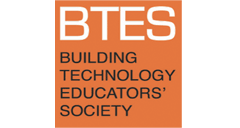Design for an industrialized construction in architecture education: a case study integrating dfma and digital twin in the design studio
Abstract
This case study aims to contribute to the adoption of Industrialized Construction (IC) principles into teaching. The paper presents the work done in a Master of Architecture studio conducted remotely. A pedagogical approach to introduce Design for Manufacturing and Assembly (DfMA) and Digital Twin concepts is presented. An analysis is conducted to evaluate the effectiveness in integrating IC principles into the design studio. The analysis framework uses the DfMA guidelines developed by the American Institute of Architects (AIA), the Royal Institute of British Architects’ RIBA Plan of Work 2020, and the British Ministry of Housing’s Modern Methods of Construction. The case study uses three phases in the design process, pre-design, design, and post-design, in its evaluation. The analysis results show that certain components of DfMA can successfully be integrated into a design studio framework. Although the structure of AIA and RIBA guidelines is followed, the order of the design process can vary according to the workflow designed by the students in the pre-design phase. The case study demonstrates a pervasive sense of social and ecological responsibility associated with the adoption of IC techniques in the design studio. There is an opportunity to expand the potential of IC practices by thinking beyond the design methodology. Findings suggest modularity as a social connector, which in turn, serves as a component towards a more cohesive built environment.
Keywords: Education, Industrialized Construction, Design for Manufacturing and Assembly, Digital Twin, Modular Architecture, Built Environment
How to Cite:
Sanguinetti, P. & Rodríguez, L., (2023) “Design for an industrialized construction in architecture education: a case study integrating dfma and digital twin in the design studio”, Building Technology Educators’ Society 2023(1), 232-245. doi: https://doi.org/10.7275/btes.1957
Downloads:
Download PDF
